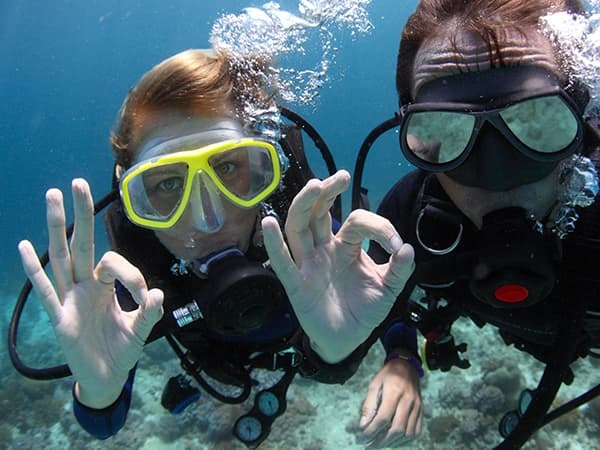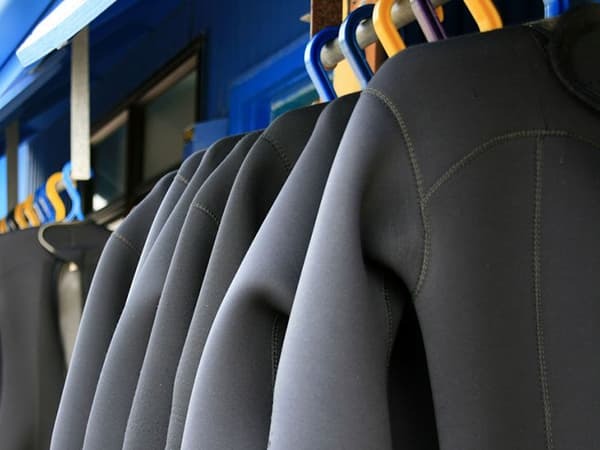Fabrics & material
Neoprene


In the 1930s, DuPont's Wallace Hume Carothers invented neoprene; About 20 years later, Hugh Bradner invented foaming neoprene. This kind of waterproofing rubber has insolation feature as down jacket, and be utilized as a material of a cold-proof cloth. In order to keep warm, achieve sun protection, and protect the fragile skin, people began to wear wetsuits for all diving activities.
Cold-proof clothing is divided into two main types: dry and wet cold-proof clothing. Dry cold-proof clothing is usually used in heavy contaminated environment , extreme cold weather, and for long-term diving behavior. Because the sea water will not infiltrate into the cold-proof clothing, it is called dry cold-proof clothing. In addition to good balancing skills, dry cold-proof clothes require a cylinder.
Usually, we wear wet suits. There are thousands kinds of cold-proof clothes on the market, and the main demand of free-diving cold-proof clothing is to keep warm and flexible.
Moreover, free diving include more actions than scuba diving .For instance, we often need to do Duck Dive, take the camera in the water, make beautiful movements, and even use bubble rings to harass small animals (Oops). Above actions are done while holding breath. It means that each action is oxygen-consuming. If the cloth can be flexible enough, we can save much oxygen.


On the other hand, if free-diving cold-proof clothing has a zipper, it will limit the elasticity. Besides, zipper’s pores will also allow water to infiltrate. As a result, most of the free-diving cold-proof clothing are designed without zipper, showing a two-piece state. The tops will contain a headgear, pants are high-waisted pants or sling pants (Long John/Farmer John). The latter often used in producing fishing wader. With Chest Wader, it keeps warmer and relieve the pain when the fish gun is loaded. That why it has extra chest pad for fishing and hunting.
Open Cell (Cell Skin), a special inner layer texture of cloth, which is an open surface that is not covered by any cloth. As above mention, cold-proof clothing is made of foaming neoprene, which means that the surface of this layer has a lot of small pores (Cells). Small pores just like small suction cups, it can help the cold-proof clothing more skin-tight to your skin, and protect you from hypothermia. Besides, the degree of warmth will be greatly increased. There is/Without Open Cell's cold-proof clothing, the body temperature difference is about 3 degrees!
Although the fabric of Open Cell is much warmer, because there is no cloth protection, soft neoprene can easily be damaged. Therefore, you need to be careful while wearing it. Open Cell fabric in a dry state is difficult to wear, so moisten it before wearing.
Next, generally, we choose the fabric which has nylon protection to be the material of outer layer of cold-proof clothing. If we pursue the cloth not only warm but also flexible, it will have extra layer. If a cloth has extra layer, will the degree of flexibility be decreased? Exactly, we all know that rubber will easily be oxidized while exposed under the sun. As a result, if there is an extra fabric layer, although flexibility will be decreased slightly, we can increase greatly in durability. Many manufacturers will proclaim that the stretchiness of their nylon fabric is up to 400%. the purpose is to increase flexibility.


In Taiwan, if you want to relax and do water activity all year round, we recommend these two type of cold-proof clothing , 3mm and 5mm. If you are amateur, 3mm is enough. However, 5-7mm is more suitable to profession.
Smooth Skin is so called "light fabric leather". You will see these cold-proof outfits in many free-diving competitions, which also symbolize” Close Cell” (meaning there are no small pores on the surface), so it costs nothing while adding an extra layer of cloth to the surface. It is completely advanced to a state without restraint! Moreover, the water resistance is also weaker than the ordinary cold-proof clothing. During the competition, any detail is important. In comparison, the cloth without any protection will easily be damaged by item, such as finger nail, pets, friction, etc.
In order to keep warm, the inner layer of cold-proofing clothing use One Call, too. Outer layer and joint don’t have any cloth protection. It didn’t use any stitches but simple glue. The purpose is to make the best elastic performance. Besides, special dye can reduce friction and water resistance.
In the competition, Players usually stay only about 30 minutes in the water. Most of the competition will not be held in a very place with the low temperature water, so in recent years, players pursue the clothing as frivolous as possible. The purpose are not only better ductility but also neutral buoyancy. As a result, it develops cold-proof clothing with thickness within 0.5mm to 1.5mm. But it's easy to tear if the clothing is too frivolous. So the material of the inner layer of competition suit is returned to Open Cell. Add stitch, reduce some warmth in order to improve the durability performance.
